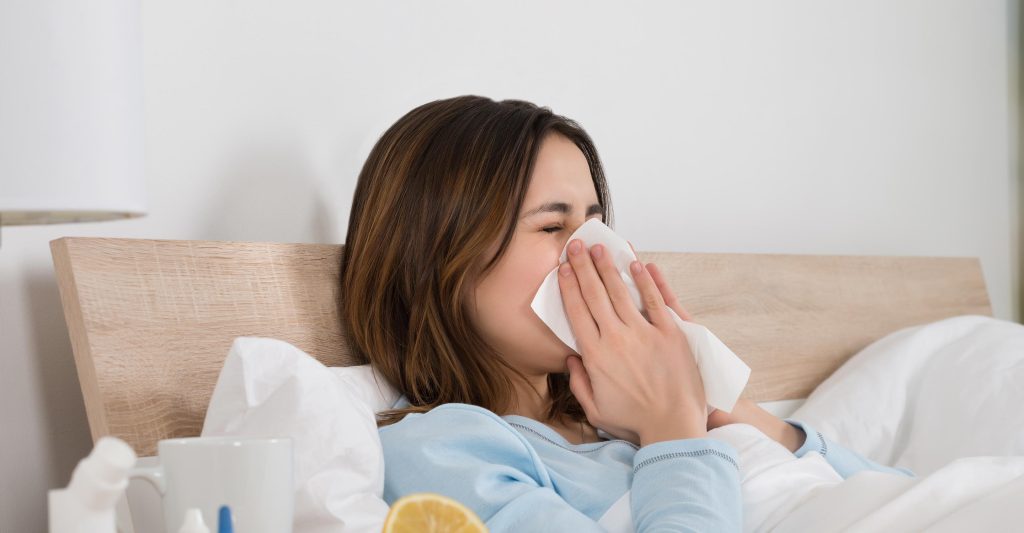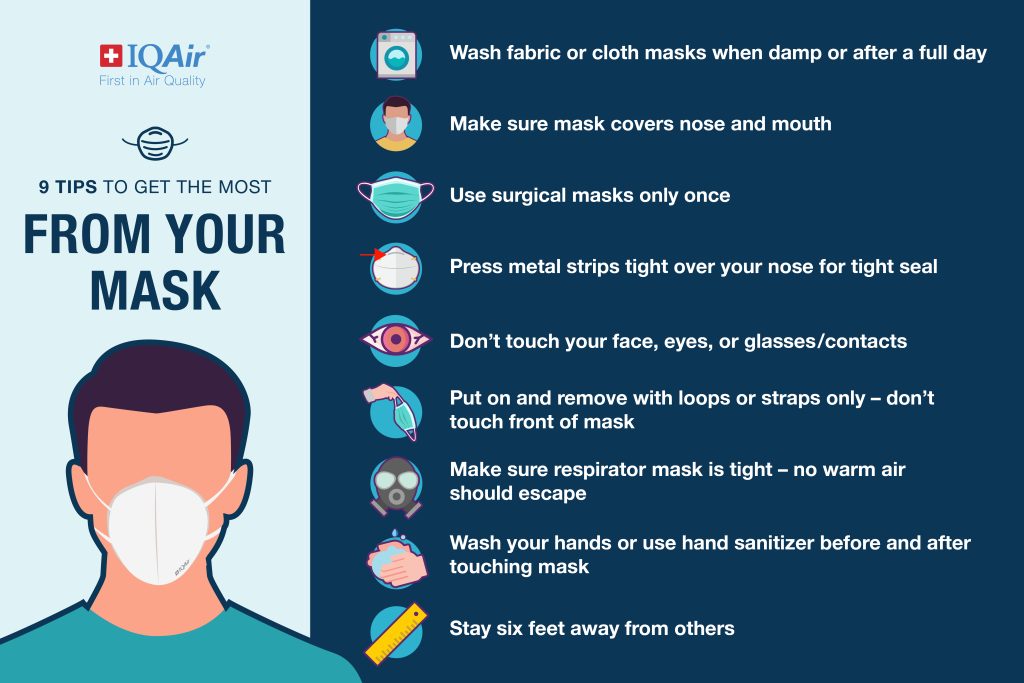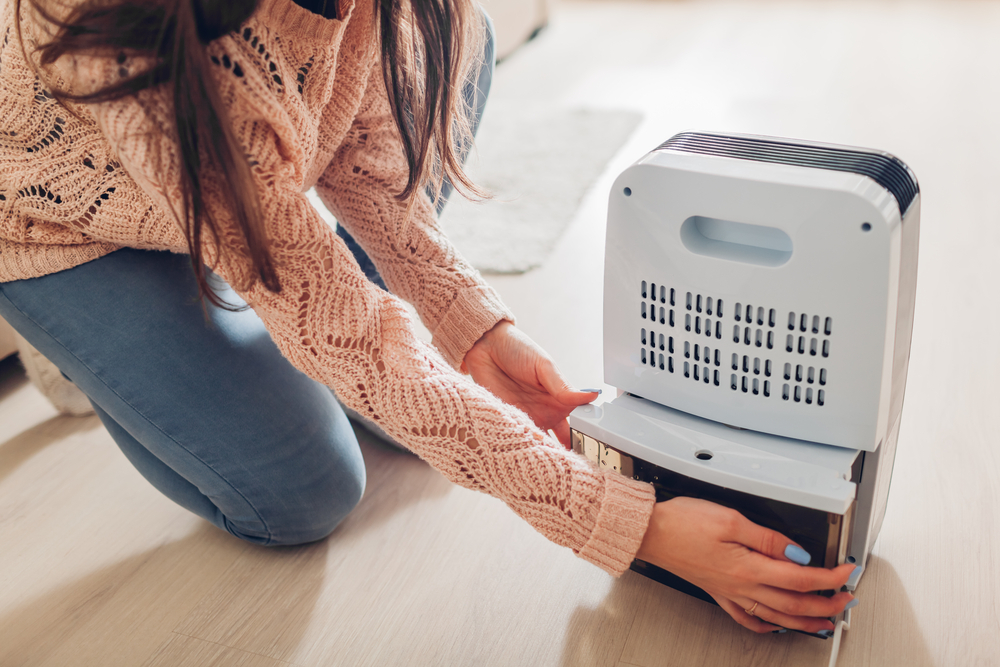Imagine a situation where you could greatly lower your risk of getting the flu or a cold by just turning on an air purifier. It seems too wonderful to be true, isn’t it? Well, reconsider! We shall investigate if air purifiers can potentially stop the spread of the flu and the common cold in this post. Prepare to find out if these practical tools can be your hidden weapon in the fight against airborne viruses.

Effectiveness of Air Purifiers
The use of air purifiers has grown in popularity as a way to enhance indoor air quality and lessen the spread of the flu and the common cold. For those looking to create a healthier environment, air purifiers provide a variety of possibilities thanks to their numerous forms and mechanisms of action. Making an informed choice about these devices’ efficacy requires an understanding of their filtering efficiency.
Types of Air Purifiers
There are various types of air purifiers on the market, each with special characteristics and advantages of their own. Mechanical filters, electrostatic precipitators, ozone generators, and ultraviolet germicidal irradiation (UVGI) tools are among the most used types.
Mechanical filters work by trapping airborne particles through a thin mesh, such as High-Efficiency Particulate Air (HEPA) filters. Ozone generators emit ozone to eliminate airborne contaminants, whereas electrostatic precipitators employ an electric charge to attract and collect particles. UVGI devices employ ultraviolet light to kill bacteria, viruses, and other microbes.
Mechanism of Action
By capturing and eliminating airborne particles, air purifiers enhance the quality of the air in a room. Airborne particles as thin as 0.3 microns can be effectively captured by mechanical filters like HEPA filters. Electrostatic charges are used by the electrostatic precipitators to draw in and remove airborne particles. Ozone is produced by ozone generators, and it has the ability to destroy some bacteria and mask odors. UVGI devices employ ultraviolet light to inactivate viruses and bacteria by destroying their genetic material.
Filtering Efficiency
When assessing the performance of air purifiers, filtration effectiveness is a crucial feature to take into account. The best filters for eliminating airborne particles are typically considered to be HEPA filters. Over 99.97% of particles as small as 0.3 microns can be captured by them. Electrostatic precipitators can also be quite effective, although the type of device and upkeep will affect how effective they are. Ozone generators should not be used indoors as they may release hazardous fumes. The effectiveness of UVGI devices in neutralizing bacteria might vary depending on the exposure time and distance from the light source, among other variables.
Air Purifiers and Common Colds
By lowering the amount of airborne viruses, air purifiers can help stop the spread of common colds. With the use of these technologies, interior environments could be made healthier and less conducive to infection.
Role in Prevention
By eliminating airborne viruses from the environment, air purifiers can be a useful technique for cold prevention. Respiratory droplets containing the cold virus might become airborne when a person with a cold coughs or sneezes. These droplets can be captured by air purifiers with HEPA filters, lowering the danger of transmission to other people in the same area. Air purifiers can aid in preventing the spread of common colds by lowering the amount of viruses in the air.
Reduction of Airborne Viruses
HEPA filters on air purifiers are intended to trap particles as small as viruses, including those that cause colds. It is much less likely that people will come into touch with infectious particles thanks to these devices’ ability to dramatically lower the concentration of airborne viruses.
Effectiveness Against Cold Symptoms
It’s vital to remember that air purifiers only help prevent the spread of colds; they do not really treat cold symptoms. Although they can lessen the amount of viruses in the air and improve its quality, air purifiers cannot treat a cold or lessen its symptoms. Even so, it’s still important to maintain good hygiene and get the right medical care for cold symptoms.
Air Purifiers and Flu
In addition to preventing common colds, air purifiers can also lessen the spread of influenza or the flu. When used in conjunction with other preventative measures, these devices’ filtering abilities can contribute to the improvement of indoor air quality during flu seasons.
Reducing Influenza Transmission
Through the capture and removal of airborne viruses, air purifiers can aid in reducing the spread of influenza. The flu virus is extremely contagious because it can persist for a long time on surfaces and in the air. People can reduce the amount of the flu virus in indoor settings and lessen their risk of infection by utilizing air purifiers with HEPA filters.
Filtering Out Flu Virus
High-efficiency filters like HEPA can efficiently collect and remove particles as small as the flu virus. This indicates that the concentration of the flu virus in the air can be greatly reduced by air purifiers fitted with HEPA filters, decreasing the likelihood of people coming into touch with infectious particles.
Managing Flu Symptoms
Even while they can lessen the spread of flu viruses, air purifiers cannot treat or treat the symptoms of the flu. It’s crucial to get the right medical care and adhere to suggested practices for managing flu symptoms. When combined with other preventive measures like hand washing and immunization, air purifiers can help create a healthier interior environment during flu season.
Choosing the Right Air Purifier
The efficiency of an air purifier in enhancing indoor air quality and preventing the spread of the flu and the common cold depends on the choice of air purifier. When selecting an air purifier, a number of aspects should be taken into account, including as size and capacity, filter type, and maintenance needs.
Considerations for Effective Air Purification
It is crucial to take into account the unique requirements of the indoor environment in order to maximize the efficacy of an air purifier. It is important to consider variables including the size of the room, the number of inhabitants, and the presence of particular contaminants. To obtain the necessary improvement in air quality in a bigger room, a more potent air purifier or numerous units may be needed.
Size and Capacity
An air purifier’s capacity and size can have a direct impact on how well it cleans the air. Larger air purifiers are often made to cover a larger area and have a faster air circulation rate. To guarantee best performance, it’s critical to pick an air purifier that is the right size for the room or space where it will be utilized.
Filter Type and Maintenance
An air purifier’s performance is significantly influenced by the type of filter it uses. It is well known that HEPA filters are very effective in removing airborne particles, including bacteria and viruses. Volatile organic compounds (VOCs) and odors can be eliminated using several filter types, such as activated carbon filters. For the air purifier to continue to function effectively over time, routine filter maintenance, such as cleaning or replacing filters as advised by the manufacturer, is required.

Supplementing Air Purifiers with Other Measures
While air purifiers can help to improve indoor air quality and stop the spread of the flu and the common cold, for optimal effects, they should be used in conjunction with other preventive measures. The use of good hand hygiene, vaccinations, and enough ventilation are essential to maximizing the advantages of air purifiers.
Hand Hygiene
It’s crucial to practice proper hand hygiene, such as routinely washing your hands with soap and water, to stop the transmission of viruses. The prevention of the spread of the common cold and the flu still heavily relies on hand cleanliness, despite the assistance of air purifiers in capturing and eliminating airborne viruses.
Vaccination
A good method to avoid infection is to get vaccinated against common respiratory viruses, such the flu. Vaccination offers direct protection against particular viral strains, however air purifiers can lower the amount of viruses in the air. The risk of catching the flu and the common cold can be considerably decreased by using air purifiers in conjunction with vaccinations.
Proper Ventilation
For the purpose of ensuring optimum indoor air quality, proper ventilation is necessary. Fresh air can be introduced into indoor spaces by opening windows or employing mechanical ventilation systems to assist eliminate stale air. By reducing any leftover airborne contaminants, this can support the work of air purifiers.
Limitations of Air Purifiers
While air purifiers significantly improve indoor air quality and decrease the spread of the common cold and flu, they also have some drawbacks that should be taken into account.
Incomplete Virus Capture
No air cleaner can guarantee the complete removal of all airborne contaminants, including viruses. Even though HEPA filters are quite effective, a tiny number of viruses may nevertheless manage to bypass filtration. Air purifiers should not be used as the only preventive strategy; they should only be used as an extra layer of defense.
Hindrances to Transmission Prevention
The main goals of air purifiers are to eliminate airborne particles and lower their concentration. They do not, however, address transmission via contaminated surfaces or direct contact. For complete defense against the spread of the common cold and flu, additional preventive measures, such as hand hygiene and good hygiene habits, are still required.
Effectiveness in Larger Spaces
The size of the indoor space can affect how effective air purifiers are. To effectively enhance air quality in larger rooms, it may be necessary to use multiple units or stronger air purifiers. When choosing an air purifier, it’s crucial to take the area’s size into account as well as the purifier’s recommended coverage.

Effectiveness of Air Purifiers for Allergies
By lowering the concentration of common allergens in the air, air purifiers can also be useful in treating allergies.
Common Allergens Filtered
Pollen, pet dander, and dust mites are just a few of the common airborne allergens that HEPA-equipped air purifiers can efficiently catch and eliminate. Air purifiers can offer comfort to allergy sufferers by lowering the concentration of these allergens.
Improvement of Allergy Symptoms
By lowering the concentration of allergens in the air, air purifiers can aid in the relief of allergy symptoms. Sneezing, coughing, nasal congestion, and other typical allergy-related symptoms may lessen as a result. It is crucial to remember that air purifiers might not totally get rid of all symptoms, and other allergy treatment techniques can still be required.
Air Purifiers in Healthcare Settings
In healthcare facilities like hospitals and clinics, where maintaining excellent air quality is essential for patient wellbeing and infection control, air purifiers have found applications.
Application in Hospitals and Clinics
Air purifiers can be utilized in a variety of locations in healthcare facilities, such as patient rooms, waiting areas, and operation rooms. Air purifiers can contribute to the improvement of patient and healthcare worker safety by lowering the concentration of airborne microorganisms.
Reducing Nosocomial Infections
Nosocomial infections, or diseases contracted within healthcare facilities, can occur in hospitals and clinics. The risk of nosocomial infections can be reduced by using air purifiers with HEPA filters by lowering the transmission of bacteria and viruses that are airborne pathogens.
Improving Air Quality
In order to promote patient recovery and stop the spread of illnesses, healthcare facilities must maintain good air quality. In order to maintain a clean and healthy atmosphere for both patients and healthcare professionals, air purifiers can assist remove airborne particles and allergens.

Budget Considerations
It is crucial to consider both the initial investment and continuing operational costs when thinking about buying an air purifier. A cost-effectiveness analysis can be used to choose the optimal solution based on affordability and long-term advantages.
Initial Investment
The cost of air purifiers varies based on the brand, capacity, and features. Advanced filters on higher-quality air purifiers could cost more up front. It is crucial to take into account the particular requirements of the indoor environment and select an air purifier that offers sufficient filtration without going over budget.
Operating Costs
It’s crucial to take into account an air purifier’s continuing operational expenses in addition to the initial expenditure. This includes expenses for maintenance, energy use, and filter replacement. For instance, depending on usage, HEPA filters must normally be updated every six to twelve months. In the long run, the affordability of an air purifier can be determined by knowing these costs.
Cost-effectiveness Analysis
The possible health advantages that air purifiers may provide should be taken into account when assessing their cost-effectiveness. A more thorough cost-effectiveness study can benefit from considering the effects on indoor air quality, the severity of respiratory problems, and general wellbeing. The long-term health advantages of using an air purifier that successfully enhances air quality and decreases the spread of the common cold and flu can outweigh the initial and ongoing costs.
Conclusion
Air purifiers can be a useful tool for enhancing indoor air quality and preventing the spread of the flu and the common cold. People may choose the best device by being informed about the different types of air purifiers, their working mechanisms, and the level of filtration they give. When used in conjunction with good hand hygiene, immunization, and ventilation, air purifiers can greatly help create a healthier interior environment, even though they are not a full answer on their own. Air purifiers offer supplementary defense against allergies and respiratory disorders by lowering the concentration of airborne viruses and common allergens. The proper air purifier can be chosen to satisfy individual needs by taking into account the budget and performing a cost-effectiveness analysis. In general, air purifiers provide a useful tool for encouraging improved indoor air quality and fostering general wellbeing.
Recommendations: TPLMB Air Purifiers

